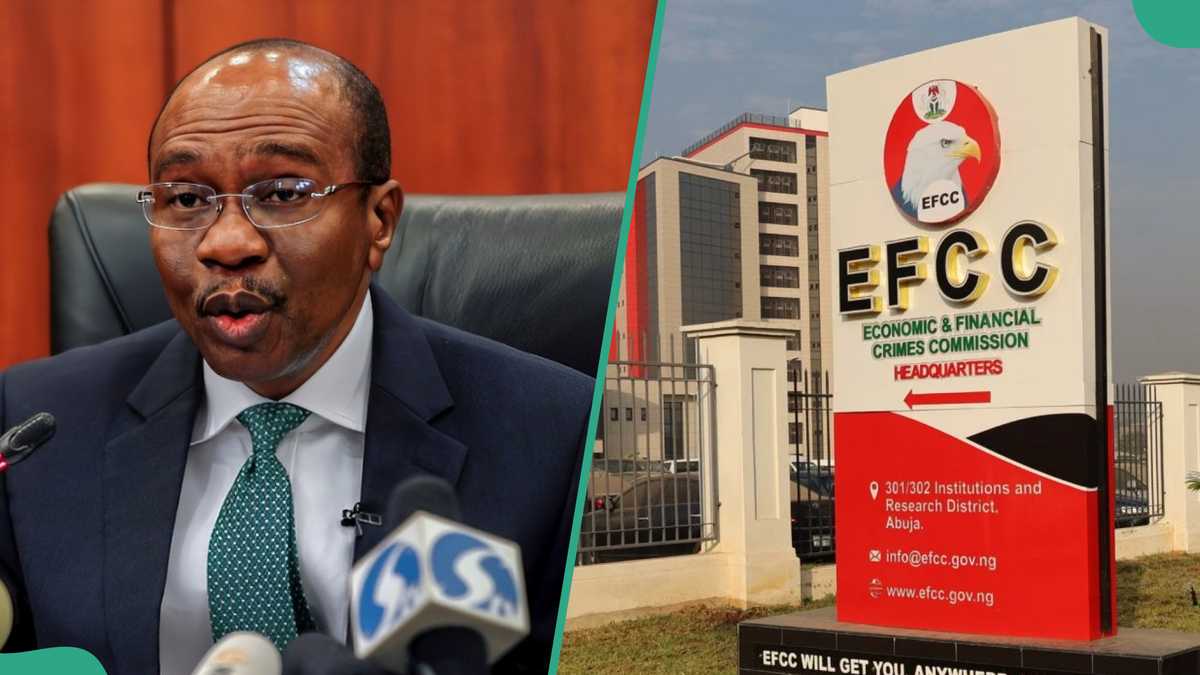10 hiring mistakes early stage founders make - and how to avoid them - a16z crypto
If you’re an early stage founder, maintaining an almost single-minded focus on achieving product-market fit is often a winning strategy. But as soon as you reach PMF and start to scale, a whole new set of imperatives kicks in, each of which requires new skills, knowledge, and strategic thinking.
One of the biggest and trickiest of those imperatives? The need to hire, and hire fast. But moving too quickly without a plan can lead to a lot of painful, expensive errors. To help avoid unnecessary growing pains, here are 10 hiring and recruiting mistakes we see founders make again and again — and some smart ways to avoid them.
When you’re heads down building your product, it can be tempting to put off building your network — until, that is, you need to make a hire. Many founders find themselves surprised and frustrated with how challenging it is to attract the quality candidates they want if they haven’t done the prep work first.
Given that most early stage companies don’t yet have a brand to lean on for recruiting, you as the founder have to sell candidates on your mission, yourself, and the vision of where your company is going. This work requires long-term, proactive, one-on-one network building — think months (if not years).
From the moment you first have an idea for a business, you should start devoting time every week to networking, talking about what you are building, and developing relationships with people who you may want to eventually recruit — all before you feel the need to hire.
All founders have hectic schedules, but you can’t let your stress lead to a rushed, haphazard interview process. Interviewers who haven’t reviewed profiles, don’t have set questions prepared, ask the same questions as other interviewers, and leave candidates with no update for days or weeks? This is the stuff of candidate nightmares.
A candidate who is excited about a company will lose interest quickly if they get little to no communication from the team, or if that communication is disjointed and delinquent.
Remember that candidates are also interviewing the company — and are often speaking with multiple companies. Even worse, bad news travels quickly, and a company’s reputation can sour for an entire candidate pool if it neglects to keep their candidates happy and engaged, especially in an industry that’s still as small as crypto.
Be sure to allocate enough resources to recruiting (either through hiring talent experts or through your own prioritization) so that the interview process is run well with consistent candidate communication. And remember to carve out time to prepare for interviews.
Each candidate’s motivations are different. Unless you understand what this specific candidate is looking for or why they are interested in speaking with you in the first place, how can you expect to effectively pitch them? Knowing the fundamentals of interviewing is important — asking about a candidate’s motivations for speaking with you, what’s lacking in their current job, what they value in a culture, their timeline for making a decision, compensation expectations — but you also have to be prepared to shape what you learn into a customized pitch for candidate you’re talking to — which means taking the time to know the candidate (which starts with networking — see #1 above).
This challenge is particularly acute in the web3 world given the relatively complicated nature of the industry, combined with the fact that companies in the space must often hire candidates from Web2 who don’t have a strong foundational comprehension of the technology and its potential.
Without knowing the candidate, you may inadvertently emphasize something the candidate isn’t excited about, or, conversely, might neglect to highlight something that could have drawn them in. The alternative is simple: Start introductory calls with a set of questions that help you learn who the candidate is, and then tailor the pitch accordingly.
It can be tempting to move with undue urgency, skipping steps that can save a huge amount of pain down the road. For instance, if a candidate seems perfect, you might want to sidestep work trials or some equivalent that allows you to verify a candidate’s fit and quality. This “time saver” can be a costly mistake.
Think of it this way: Any time you might think you are saving time during the hiring process, you could be setting yourself up to spend even more time managing the performance of a bad hire. And a bad hire can be catastrophic to an organization — especially a small one that needs to move fast (like, you know, a startup).
Instead, create strong, consistent processes — ideally with a work-trial component — to test out the candidate’s working style and fit with the current team. Don’t skimp on thorough reference checks, and if possible, go beyond the “front-door references” (those that are provided by candidates) and seek out back-channel references by tapping into your network’s network. (You should also take care when choosing who to speak with for backchannel references as you don’t want to compromise the candidate’s current position.) This will give you the opportunity to dig into areas of concern from the candidate’s interview process. And you should always check if that person would work with the candidate again.
Building a team before you establish your values is another potentially costly mistake. Brian Chesky, co-founder and CEO of AirBnB, calls culture “a shared way of doing something with passion.” When a founder sets a strong culture through shared values, it can lead to deeper trust among employees, foster autonomy, and reduce the need for formal process. The absence of good culture can lead to a lack of alignment in how everyone functions as your company grows — which can then lead to performance, communication, and retention issues. (There are lots of great articles worth reading about the role that clearly defined values played in the early growth of companies including Airbnb and Netflix.)
Having clearly defined values as you build your team can prevent you from hiring people who have incompatible value sets, which could compromise the culture you’re trying to build. It’s a vicious circle.
Your values are the common bond and shared philosophy of working that will hold your team together when things get tough. Once they’re defined, it’s important to incorporate them into your hiring process in a structured, consistent way. For example, you should determine pre-defined questions to evaluate someone’s alignment with each value, and ask those exact questions in each interview. This way, the best answers are easy to identify and you don’t fall into the common trap with culture interviews of seeing if you “jibe” with a person or could “see yourself spending time with them.” This structure should help to reduce unconscious bias, which can easily creep in when doing culture interviews.
Also, ensure that strong culture-carriers are trained to use the questions that you’ve all agreed to. They can leverage those questions so that the best answers are easy to spot. Devote at least a couple interviews to purely vetting culture during the interview process, to ensure that it doesn’t get pushed to a “we’ll get to it if we have time.”
You’ve got a burning problem and not enough hours to think about it. It needs to be solved now: business development, strategy, marketing, and so much more. But avoid the temptation to solve for today’s problems with a hired gun without thinking about your future together.
What happens in 6 months or a year if you grow exponentially? Will this still be the right person to lead the overall strategy? Or will you need someone with more breadth and an international network?
Take the time to think through all the leadership roles you might need over the next year and consider how these roles will evolve. Who will own what? What will the swim lanes look like?
Your goal is to be crystal clear with ownership to avoid power struggles and redundancy as you hire a leadership team. Long-term thinking can also help you be more strategic when recruiting — finding people who have both the skill for a later stage role and enthusiasm about the opportunity for ownership that comes with a startup. It’s crucial to be transparent at the outset with a new hire, on short-term and long-term expectations around what success looks like in the role, as well as what the organization looks like under different growth scenarios. This will safeguard your ability to either promote or layer as needed. By taking the time to be proactive about your hiring plan, you can avoid reactive hiring, which can lead to mistakes.
It can be tempting to hand out lofty titles — chief X officer — to help lure candidates. And some candidates love them. But setting this lure can lead to problems down the road. For instance:
Give people a chance to actually prove that they’re great at leading before you give them a fancy title. And before you give out senior titles, follow the advice in Number 6 above: think about what your company structure will need to look like in the next six months to a year. What roles do you foresee needing to hire for?
Consider if the candidate in consideration is truly the right seniority for the title they’re requesting. Ideally, you can bring them in at a level below and have them prove to you over six months if they are truly the level they claim.
Founders sometimes assume that if they hire someone experienced, that person can be given a laptop and begin to succeed on day one. While it’s fair to assume that a well-vetted, experienced professional should be good at their job, it’s not fair to assume they are mind readers. The only way to make sure you and new hires are aligned on expectations is to communicate them.
Establish onboarding that consists of what you expect candidates to deliver and the timeframe (say: 30/60/90 days). This is the bare minimum. Follow up on their progress regularly (ideally weekly) for the first 90 days and adjust the cadence going forward as you both see fit.
Be sure to give feedback on what’s working and what’s not, and provide a channel for new hires to request what they need to get their jobs done, from equipment to access. For founders at very early stage companies — those with fewer than 10 employees — personally connect new hires with the other employees.
This is a very bare-bones onboarding process, but it’s one that’s realistic given early-stage founders’ bandwidth constraints.
As you grow, it’s absolutely worth investing in building out a more robust onboarding scheme. But the most important elements of a good onboarding, barebones or robust, are to establish expectations and a strong communication channel between a new hire and their manager and to ensure that your new hire has all the tools, equipment, and context necessary to hit the ground running; and to establish rapport with the team.
Stanford, MIT, Princeton, Waterloo, and Cornell are all great schools with world-class programs. But don’t preclude candidates simply because they have a different background.
There are countless candidates who didn’t attend a top-tier institution but who might have spent their free time working on engineering side projects in Github or solving practical problems in the real world — strong indicators of curiosity and a bias toward problem solving (two things that can lend to success in a startup).
Likewise, overemphasizing candidates with experience at FAANG companies will limit your talent pool. Yes, these companies typically have a high bar for talent and have established strong engineering rigor. But there are many other companies that have strong talent brands and have invested in their engineering programs. Plus, not everyone who thrives in the structure of a FAANG company will do well at a scrappy startup.
Instead of pedigree, look at how the candidate has advanced in their career:
On the opposite end of the spectrum, crypto founders can assume that a“crypto-native” candidate is automatically stronger. By limiting your pool to crypto natives, you could lose out on great candidates who have strong experience and rigor from the Web2 world. In the early days of Coinbase (ca. 2014), there were no crypto natives, so we instead looked at candidates from “crypto-adjacent” companies (e.g., payments companies) for core skills combined with genuine interest and passion for the space. Then we gave new hires time and support to ramp up.
While it’s true that engineers who have worked in RUST for years can likely begin contributing right away, any strong engineer should be able to get up to speed on a new language in a month or two. So rather than spending eight months searching for the perfect web3 candidate, open the search, fill the role in half the time, and allow that person time to onboard into the space.
By all means recruit web3 candidates, but expand your candidate pool — and create an onboarding that allows ramp time into the technology and industry.
On the one hand, having the flexibility to hire remotely makes it easier to find talent and caters well to people who are more productive working at home. On the other, establishing trust and genuine relationships when everyone is remote can become much more challenging.
Trust is often established through genuine relationships — and it can foster more direct problem solving, and create better cross-functional collaboration and bonds and friendships that can help hold your company together when things get tough.
So does that mean remote-first companies don’t work? Of course not. But there’s a middle ground of hiring remotely that involves regular in-person offsites and working sessions that allow people to collaborate and develop friendships.
In addition to more in-person collaboration at the team level, you can also cluster your remote hiring in key regions and have local gatherings more often.
Remote work cultures are a gift that have enabled us to be more inclusive with how we hire, allowing people to work together wherever they might live, however it’s important to understand that the lack of in-person collaboration has a cost, so you need to build structure to mitigate it.
***
Running a startup is hard and as a founder you are pulled in a million different directions — one of which is recruiting top talent to grow the company. And while recruiting isn’t easy, it’s also not rocket science. When they make it a priority, any founder can learn to be a great recruiter — as long as they have the right motivation, drive, and guidance. This list can help you steer around the most serious pitfalls — and maybe even encourage you to find and develop a relationship with a recruiting expert and leverage that person as a sounding board as you build your company.
***
Acknowledgements: Thank you to the whole a16z crypto Talent team for their crowdsourcing contributions, especially Mehdi Hasan and Craig Naylor for workshopping ideas. And a special thank you to Tim Sullivan for partnering with me to co-create this article from concept to publishing.
***
Aurora Petracca is an external startup advisor who has spent more than a decade working in technology in San Francisco. As a recruiter and leader, she grew Airbnb from 50 to 900 and Coinbase from 7 to 700. Prior to Airbnb she worked in HR at Salesforce and was an Engineering Recruiter at Google. Aurora specializes in early-mid size (5-700 employees) hyper-growth startups and now works as an independent advisor working with a16z Crypto as well as other startups both in and outside of the web3 space. You can follow her on X @aharshner.
***
The views expressed here are those of the individual AH Capital Management, L.L.C. (“a16z”) personnel quoted and are not the views of a16z or its affiliates. Certain information contained in here has been obtained from third-party sources, including from portfolio companies of funds managed by a16z. While taken from sources believed to be reliable, a16z has not independently verified such information and makes no representations about the current or enduring accuracy of the information or its appropriateness for a given situation. In addition, this content may include third-party advertisements; a16z has not reviewed such advertisements and does not endorse any advertising content contained therein.
This content is provided for informational purposes only, and should not be relied upon as legal, business, investment, or tax advice. You should consult your own advisers as to those matters. References to any securities or digital assets are for illustrative purposes only, and do not constitute an investment recommendation or offer to provide investment advisory services. Furthermore, this content is not directed at nor intended for use by any investors or prospective investors, and may not under any circumstances be relied upon when making a decision to invest in any fund managed by a16z. (An offering to invest in an a16z fund will be made only by the private placement memorandum, subscription agreement, and other relevant documentation of any such fund and should be read in their entirety.) Any investments or portfolio companies mentioned, referred to, or described are not representative of all investments in vehicles managed by a16z, and there can be no assurance that the investments will be profitable or that other investments made in the future will have similar characteristics or results. A list of investments made by funds managed by Andreessen Horowitz (excluding investments for which the issuer has not provided permission for a16z to disclose publicly as well as unannounced investments in publicly traded digital assets) is available at https://a16z.com/investments/.
Charts and graphs provided within are for informational purposes solely and should not be relied upon when making any investment decision. Past performance is not indicative of future results. The content speaks only as of the date indicated. Any projections, estimates, forecasts, targets, prospects, and/or opinions expressed in these materials are subject to change without notice and may differ or be contrary to opinions expressed by others. Please see https://a16z.com/disclosures for additional important information.










